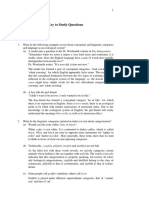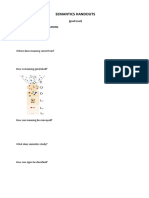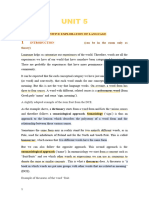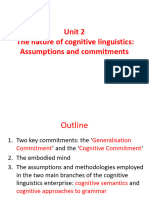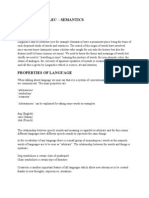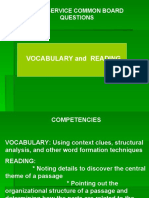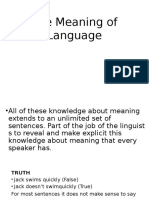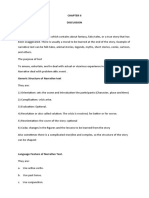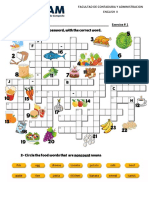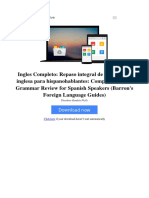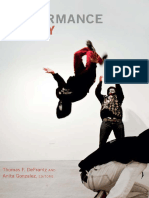Semantics 3 outline
extension – the entities (referents) in the real world that are denoted by a word, e.g.: pants refers to capri
pants, bermuda shorts, dress slacks, jeans, chinos, etc.
intension – the set of defining or characteristic properties shared by all of the referents of a word, e.g.:
the intension of table is any piece of furniture with one or more legs and a flat top surface, used for
writing, dining, etc.
entailment – the relationship between two sentences where the truth of one (A) requires the truth of
the other (B), e.g. (A) The president was assassinated entails (B) The president is dead.
a. Mary broke the window ||- The window broke.
b. Sue and Fred went to the party ||- Sue went to the party.
c. A: The earth goes round the sun. || -The earth moves.
d. Bob chased three rabbits. || -Someone chased three rabbits., Bob did something to three rabbits., Bob
chased three of something., Something happened.
contradiction – the quality of being logically incompatible (i.e. if one statement is true, the other must
be false), e.g. He is an orphan contradicts His parents are living; I was fatally ill last year is internally
contradictory.
semantic/lexical field denotes a segment of reality symbolized by a set of related words. The words in
a semantic field share a common semantic property. Most often, fields are defined by subject matter,
such as body parts, landforms, diseases, colors, foods, or kinship relations. Internally, these may be
organized as a hierarchy (e.g., royalty, military ranks), as a meronymy (e.g., body parts), as a sequence
(e.g., numbers), or as a cycle (e.g., days of the week, months of the year), as well as with no discernible
order. A thesaurus is generally organized according to substantive fields (although it also makes use of
hyponymy and synonymy). (Brinton & Brinton 2000). Examples of lexical fields:
a. parts of the face: forehead brow nostrils nose lips eyelashes, etc.
b. stages of life: new-born, infant, child, youth, adult, mature person, etc.
c. water forms: ice, water, steam, vapor, sleet, rain, snow, hail
water in motion: creek, river, waves, billows, stream, rain, brook, rivulet, tributary, spring
frozen water: ice, snow, crystal, sleet, hail, icicle, iceberg, rime, hoarfrost, glacier
Figurative language:
metaphor – figurative language which involves a sense transfer from one domain to another, often from
the concrete to the abstract or the physical to the cognitive
Fuchs 2006
Ex 1 What is the one image schema underlying these metaphors?
to be in the thick of things, fall outside my realm of experience, be in sight, go out of view, be in love/out
of love, be in a rage/in a funk/in a good mood
Ex 2 Identify the type of figurative expression (synesthesia, tautology, oxymoron, apparent tautology,
metonymy, personification, synecdoche, metaphor) in each of the following:
� a. a smooth wine h. the paper n. a bitter reproach
b. an autobiography of her i. a loud color o. the hands of a clock
life j. a new initiative p. blood, sweat, and tears
c. passive aggressive k. The pen is mightier than q. an on-off relationship
d. wildlife management the sword. r. The traffic is crawling.
e. Orders are orders. l. a new set of wheels s. search one's soul
f. an endowed chair m. ”Death, thou shalt die”. t. Enough is enough.
g. a hard-hitting report (John Donne)
Construal:
meaning construal – our ability to conceive and portray the same situation in alternate ways. Our view
of the world is mentally constructed. The conceptualisation of a scene is reflected in a linguistic form: a
visual way of thinking; a speaker wishing to describe a scene or event must first conceptualize (mentally
organize or “construe”) it before it can be encoded (“realized”) in particular linguistic forms.
The same speaker may potentially construe the same objective situation differently, i.e. employ different
imagery, depending on his previous experiences, his purpose, and on the circumstances.
“(a) Language is essential to social interaction and the construction of our mental world.
(b) Lexicon and grammar form a continuum, all elements of which are meaningful.
(c) Every lexical and grammatical element incorporates a particular way of apprehending
conceptual content—linguistic descriptions are never truly neutral. (…)
(e) We are not forced by our language to view a situation in one particular way. It always provides
alternative means of expression that construe it differently.” Langacker (2008)
Construing the mental image resembles painting a picture:
– the selection of material: – what fragment of the perceived situation will be included in the frame,
– the level of abstraction (or specificity) of the image: – how schematic or detailed it will be,
– the division into figure and ground: what will be brought into the focus of attention and what will
remain in the background,
– the perspective, vantage point, orientation from which the scene will be viewed. Langacker (as well
as Talmy 1988) show how these choices are reflected in linguistic form. (Kwiatkowska 2010:137)
Ex 3 Observe any changes in perspective, point of view, orientation, focusing, figure/ground division,
level of schematicity/specificity:
The hill rises steeply from the bank of the river. The fly is above the picture.
The hill falls steeply to the bank of the river. ?The picture is below the fly.
The road goes from San Francisco to LA
The car is in front of the house.
The road goes from LA to San Francisco.
?The house is behind the car.
In that picture, Sue is the last girl from the left.
In that picture, Sue is the first girl from the right. The fly is above the spider.
The spider is below the fly.
The door of the classroom opened and in came the
teacher. Mary resembles Ashley.
The teacher opened the door and came into the Ashley resembles Mary.
classroom.
�My grandma resembled the Queen. I was bitten by a dog.
?The Queen resembled my grandma. I was bitten by a Fox terrier.
I was bitten by an animal.
I have invited John’s wife to my party.
I have invited a poet to my party. A pedestrian was hit by a car.
I have invited a cat-lover to my party. Mr John White, aged 67, was hit by a Toyota
Corolla.
Language & culture; universal and culture-specific concepts:
Culture – „the ideas and assumptions about the nature of things and people that we learn when we
become members of social groups” (Yule 1985/2009: 216); Colere (Lat.) – tend, cultivate (cultivation
of the soil)
Culture can be defined as ‘socially acquired knowledge’; acquisition; having developed lg, we develop
awareness of our knowledge, culture;
we learn lg through cultural transmission and lg gives us a system of categorising the world (at least
initially); categories change and evolve (e.g. overextension of meaning in L1 acquisition)
conceptualisation prior to lg & conceptual system including entities as distinct and identifiable
categories → words for these
differences in the lexicalisation of concepts, e.g. Eng. uncle: male parent’s brother, female parent’s
brother; Norwegian farmor and mormor; conception of time, e.g. weekend; if a word is not lexicalised,
it is not expressed as a single word;
Inuits are believed to have a number of expressions for snow (qanik – snow in the air, aput – snow on
the ground)(Martin 1986). English speakers can express category variation by making lexicalised
distinctions (It’s more like slush than snow outside) and non-lexicalised distinctions (We decorated
windows with some fake plastic snow stuff).
*Pidgin in Papua New Guinea: How old are you? → “Hamas krismas yu gat?"
a system of categorising the world around us and our experience of it
Amount of time as a common category (Metaphor – e.g. TIME IS SPACE: in two days, in 1999, on
Friday, throughout this whole period. The year is packed with events, long/short time); in Hopi lg time
is categorized as points at which things change, e.g. We were there for two days → We left after the
second day. Conceptualization of time and space varies across languages.
Linguistic relativity
-backgrounded in anthropology/anthropological linguistics (Worf: Hopi perceive the world differently
than e.g. Europeans because their lg makes them so)
“The linguistic relativity principle (also known as the Sapir-Whorf hypothesis) is the idea that the
varying cultural concepts and categories inherent in different languages affect the cognitive
classification of the experienced world in such a way that speakers of different languages think and
behave differently because of it. “ Yule 2006
-linguistic determinism: language determines the way we think
-linguistic relativity: the distinctions encoded in one language are not found in any other language;
language influences thought
-criticism: – No empirical support for the strong version. – Accusations of promoting cultural
determinism and linguistic imperialism. – Counterexamples where thought or behavior is independent
of language.
-Mostly supported in its weaker version (relativism), with ongoing research fields like linguistics,
psychology, and anthropology.



